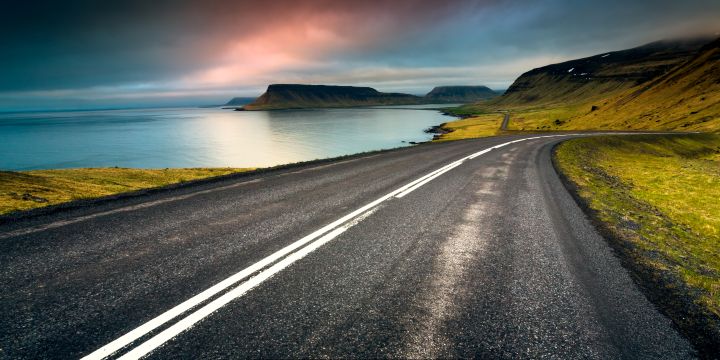Table of Contents
- Iceland’s Rising Popularity Among Global Travelers
- Key Elements Involved In Calculating Your Iceland Trip Cost
- Accommodation Choices For Every Budget
- Getting Around: Transportation Tips and Expenses
- Food, Drink, and Dining Experiences
- Activities, Excursions, and Their Value For Money
- Tracking Deals, Trends, and Seasonal Variations
- Building a Realistic Budget: Iceland Trip Cost and Planning
Iceland’s Rising Popularity Among Global Travelers
Over the past decade, Iceland has climbed the ranks as a global travel hotspot, drawing adventurers and dreamers from all walks of life. The combination of surreal landscapes—think towering glaciers, bubbling hot springs, black-sand beaches, and otherworldly lava fields—ensures there’s something for every traveler’s taste. Instagram feeds filled with dazzling Northern Lights displays and dramatic waterfalls stoke wanderlust even further, fueling a cycle of curiosity and exploration. Season after season, more people arrive to experience the island’s unique blend of natural wonder and Nordic culture, creating a diverse, energetic travel scene that constantly evolves.
As demand grows, so does the need to plan and budget carefully. Not only do visitors face fluctuating prices on accommodations and tours, but increased tourism also affects availability, especially during peak periods. Those seeking the most out of their adventure should learn about the Iceland trip cost and plan your journey. According to a recent report, Iceland is expected to reach record tourism numbers in the coming year, which brings both opportunities and challenges. You might enjoy a livelier atmosphere, but you will also need to book earlier and be wise with your spending to secure the experiences you want.
Key Elements Involved In Calculating Your Iceland Trip Cost
Crafting a budget for Iceland isn’t as simple as tallying hotel bills and plane tickets. Several areas deserve close attention: the cost of flights (which can spike with demand), accommodation, meals, transportation, and paid excursions. Iceland’s remote location means imported goods—from food staples to gasoline—often come with premium price tags, and services require more from your wallet than many mainland European countries. Further complicating things, currency rates can change rapidly, impacting what you get for your money. It’s wise to track exchange rates before you go and keep tabs on general inflation trends—some reports have noted year-over-year price jumps upwards of 10% in specific sectors. This makes it more critical than ever to allocate enough for surprises, whether a splurge on a once-in-a-lifetime tour or extra wool socks on a chilly night.
Accommodation Choices For Every Budget
Where you stay will majorly affect your expenses, but there’s flexibility to fit many styles. In Reykjavík, boutique hotels and global chains offer comfort and amenities at a premium. Outside the capital, guesthouses and farm stays deliver a warm, local experience, often featuring home-cooked breakfasts and insider travel tips. Budget travelers have flocked to Icelandic hostels for years for dorm beds, the energetic social atmosphere, and kitchen access for self-catering. And for nature lovers, Iceland’s vast network of campgrounds provides some of the world’s most scenic locations at bargain rates, especially from late May through mid-September.
- Hotels: Expect high demand and top rates during festivals or peak summer. Book early for the best value.
- Hostels: These are ideal for solo or adventurous travelers, especially near tourist routes. Check for membership discounts through hostelling associations.
- Guesthouses: Family-run spots offer friendly service and a more authentic connection to local traditions.
- Camping: Budget goldmine for groups or experienced outdoors enthusiasts, given mild summer weather and ample daylight.
The right choice depends on your comfort needs, group size, and willingness to book in advance. Remember that prices can double or even triple during high season, so flexibility and advance research are rewarded.
Getting Around: Transportation Tips and Expenses
Iceland’s vast, untamed landscapes make transportation an adventure and a key part of your spending plan. Renting a car remains the most popular choice for independent travelers, granting the freedom to wander off the beaten path. However, be prepared: costs can rise quickly due to insurance fees, limited supply in summer, and high fuel prices—one of the country’s most significant travel expenses. For those on a tighter budget, Iceland’s bus network reaches most substantial towns and tourist destinations, making it a fantastic option for hopping between highlights while soaking up the scenery. Guided group tours, meanwhile, take the stress out of logistics and offer insightful local perspectives for those happy to hand off the wheel.
Road Trip Planning Essentials
- Secure your rental car early, especially if you hope to snag a 4×4 for rugged regions like the Highlands.
- Refuel before leaving urban centers, as remote areas may have limited service stations.
- Consider eco-friendly options—electric car rentals are becoming more available, and several main highways now have charging stations.
- Bring snacks and water on long drives to avoid roadside price markups.
Food, Drink, and Dining Experiences
Eating in Iceland is part of the adventure, with menus reflecting the island’s fishing, farming, and foraging heritage. From Reykjavik’s stylish restaurants to rustic countryside cafés, you can try reindeer, arctic char, skyr, and world-famous lamb. Dining out can be expensive, especially for multi-course meals or high-end spots. Fortunately, plenty of budget-saving alternatives are available. Gas stations and grocery store delis offer hearty hot dogs and sandwiches, while major supermarket chains such as Bónus and Krónan stock up on everything needed for DIY breakfasts or picnics along the way. Many hostels and guesthouses offer kitchen facilities, letting you whip up your meals and stretch your funds further.
- Dinner at a mid-range restaurant: 3,000–8,000 ISK per person, not including drinks.
- Quick lunch: 1,000–2,500 ISK if you opt for sandwiches or local soups.
- Groceries for self-catering: A week’s supply can be as little as 7,000–10,000 ISK per person if you stick to basics and local products.
Sampling a few meals in restaurants is a treat, but mixing it up with supermarket visits is an excellent strategy to balance your Iceland trip cost and planning goals. Don’t miss out on Icelandic specialties—even the budget eateries manage to infuse their food with local flair.
Activities, Excursions, and Their Value For Money
Iceland offers an incredible array of free and paid experiences, many of which are once-in-a-lifetime opportunities. Natural attractions such as waterfalls, volcanic valleys, geothermal beaches, and rugged coastline walks are primarily free of charge, giving incredible bang for your buck. At the other end of the spectrum, organized tours like glacier hiking, horseback riding, snowmobiling, and whale watching involve more substantial fees but deliver lasting memories and crucial safety measures. Many budget travelers suggest selecting one or two “big ticket” activities you’re most curious about, mixing them with self-guided days to keep costs down without sacrificing experience.
- Free: Golden Circle sights, public hot springs, Reykjavik street art, and self-guided city tours.
- Paid: Blue Lagoon, ice cave tours, glacier adventures, and seasonal wildlife expeditions.
The key is to prioritize what matters most to you, then plan and reserve ahead, especially for tours in high demand during summer and the aurora season. Many tour companies now offer online discounts for early bookings, providing both peace of mind and savings.
Tracking Deals, Trends, and Seasonal Variations
Costs in Iceland swing widely throughout the year. Summer (June through August) brings endless daylight and a surge of visitors, making it the priciest season for nearly every aspect of travel. Conversely, while offering fewer hours of sunlight and chillier conditions, the winter months are rewarded with lower rates and the lure of the Northern Lights. Visiting during the shoulder seasons—typically May or September—can provide an ideal blend of mild weather, manageable crowds, and more affordable pricing across flights, rooms, and attractions. Price-conscious travelers should be wary of booking last-minute during peak times, as this can limit both choice and value. According to travel experts, the best times to visit Iceland each season provide unique opportunities and challenges; being flexible with your schedule can help you catch the best deals and avoid disappointment.
Building a Realistic Budget: Iceland Trip Cost and Planning
To help you map out a realistic daily spend in 2024, here’s a guideline of what different travel styles may cost, per person:
- Luxury: 50,000+ ISK per day – Expect lavish hotels, private guides, premium vehicles, and gourmet dining.
- Mid-range: 18,000–35,000 ISK daily – Guesthouses, car rentals, regular excursions, and restaurant and self-catering meals.
- Budget: 8,000–15,000 ISK daily – Hostels or campsites, public transportation, and supermarket meals.
It’s smart to add a 10–15% buffer to account for unexpected weather changes or spur-of-the-moment excursions—after all, Iceland thrives on spontaneous adventure! To simplify your planning, collaborate with travel partners on a shared spreadsheet, plug your estimates into online travel calculators, and check exchange rates as your trip approaches. Forums and blogs can provide up-to-date advice from recent visitors.
At every step, remember that flexibility and planning are your best friends. Whether your dream is a luxurious stay or a shoestring adventure, Iceland has the landscape, culture, and range of experiences to make it unforgettable. By making wise choices, timing your trip wisely, and investing in the most meaningful experiences, your journey to Iceland will be well worth every króna.



